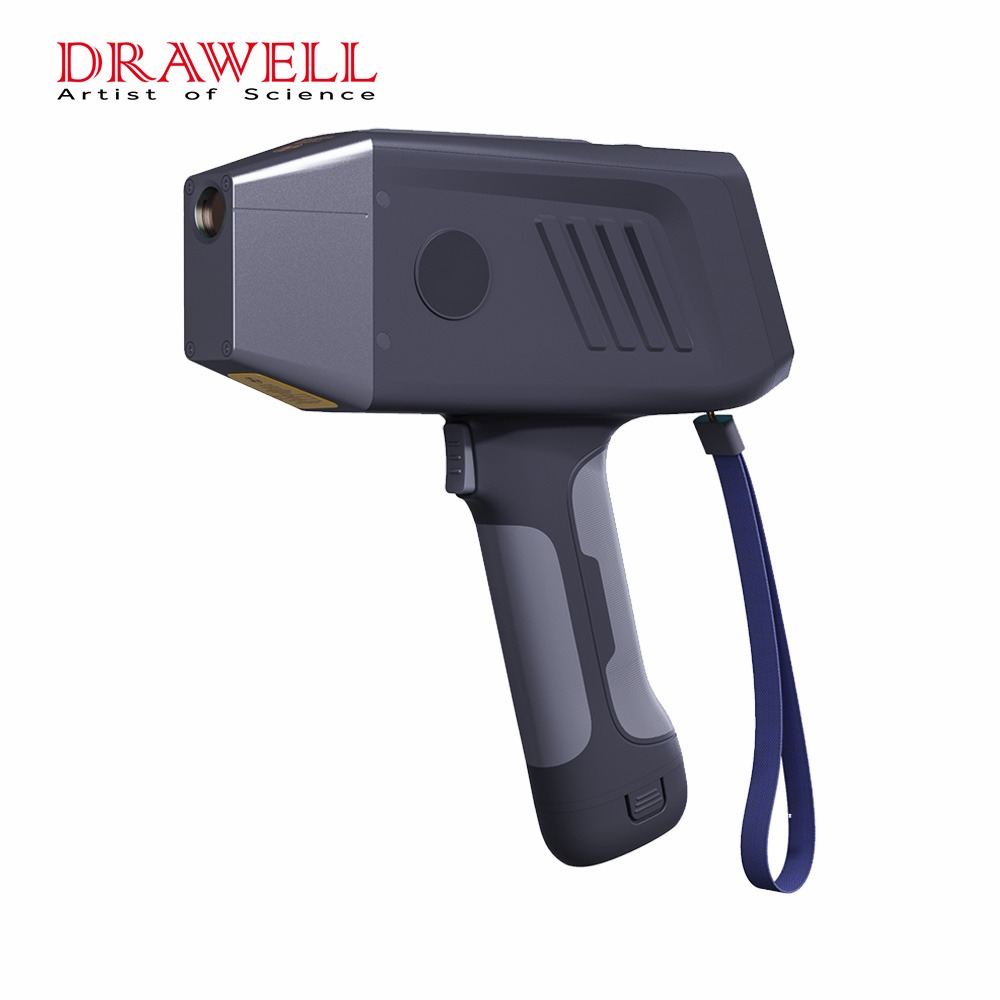Handheld XRF 3-way Catalyst Analyzer DW-980 DW-980S
The handheld XRF 3-way catalytic analyzer is used to analyze the content of platinum, rhodium and palladium in the 3-way catalytic converter.The internal ceramic honeycomb structure of the catalytic converter is coated with a carrier paint containing platinum, palladium and rhodium. Additional elements can be added to the coating to enhance the performance of the catalytic converter.
Automotive catalysts mainly contain platinum, rhodium, palladium and other precious metal elements, which are applied to purify automobile exhaust emissions. Platinum group elements recycled from automotive catalytic converters account for more than half of the market share of platinum and palladium, so is the vast majority of rhodium. In addition to accurate measurement of platinum, palladium and rhodium, DW-980S can also detect other elements that are commonly added in carrier paints. There are also some elements to be analyzed to prevent fraud. These elements are added illegally by criminals in catalysts to increase the value of precious metals.
Features of Handheld XRF 3-way Catalyst Analyzer DW-980 DW-980S
- Light weight, easy carrying, high precision and high stability without destruction.
- Able to detect the content of Pd in 3s, Rh in 15s and Pt in 30s, and output the accurate data in 30s in the whole process.
- DW-980 uses Si-Pin detector and DW-980S uses high-resolution and high-count-rate SDD detector (resolution: 129ev), imported 50kv variable high-voltage X-ray tube, imported stepper motor and other core components.
- Catalyst detection limit for SDD: 20ppm for Pt, 10ppm for Pd and 10ppm for Rh.
- One-key power-on/off operation and automatic calibration without manual operation;
- 45s from startup to testing, and 0.8s reading of the grade and other data;
- One-key sample testing, with software for automatic timing lock and stop;
- Automatic X-ray shutdown within 2s in the absence of samples in front of the test window.


Applications of Handheld XRF 3-way Catalyst Analyzer DW-980 DW-980S
Determination of Pt, Pd, and Rh in 3-way catalytic converter of a used automobile.
In recent years, the composition and price of platinum group metals (PGM) such as platinum (Pt), palladium (Pd) and rhodium (Rh) in three-way catalytic converters fluctuate more than ever before, which has increasing impact on the purchase, trading and recycling of used three-way catalytic converters.
For a single catalytic converter, the price of PGM components may be less than $100 or greater than $1,000. These materials are usually ground into powder and then mixed for trading. Therefore, businesses and recyclers should be able to:
- Identify catalytic converters or mixtures with high platinum group metal content;
- Trading at a reasonable price;
- Identify whether the mixture contains fake or inferior substances.It is critical to determine the platinum, palladium and rhodium content in catalytic converters of used automobiles in real time, thus maximizing profits and avoiding considerable economic losses.
Specifications of Handheld XRF 3-way Catalyst Analyzer DW-980 DW-980S
| Detector | KETEK ultra-large SDD detector (resolution: below 129ev), Peltier effect semiconductor refrigeration system, suitable for simultaneous recording of analytical data and spectrogram. |
| Excitation source | Moxtek high-power micro X-ray tube, W target material, 4W high-power X-ray tube, variable voltage tube (50KV), tube current up to 200μA. |
| Calculation method | Alloy 8.0 and FP-EC calculation methods. This instrument has been calibrated before delivery. It is able to build a specific correction curve and suitable for precise testing of specific samples. |
| Operating software | Windows CE6.0 (the latest version), high-resolution TFT industrial color HD touch screen, ergonomic, solid, dustproof, waterproof, clearly visible under any light conditions. |
| Heat dissipation | Due to the large-scale aluminum alloy and silica gel, the heat dissipation area is 1/3 larger than the counterpart. The integrated body is solid, waterproof, dustproof, freeze-proof and vibration-proof, which can be used normally in harsh environments. |
| Data display | Elements can be displayed or adjusted according to the test requirements. |
| Data export | Direct export by the storage device SD card or USB flash disk; export by PC software; |
| Main configuration | 1. One meter 2. One box 3. Two batteries 4. One charger 5. One manual of paper version 6. One 316 disk 7. One anti-fall wrist strap 8. One USB flash disk for software data backup 9. Five window films |
| Analysis mode | 3 standard elements: Pt, Pd and Rh, and 3-way carrier elements (Ce, Zr, Ba, Ni, Se, Ta, Pb, Ti, W) |
Sample Preparation of Handheld XRF 3-way Catalyst Analyzer DW-980 DW-980S
- First, remove the ceramic carrier from a three-way catalytic converter.
- Then, take the honeycomb ceramic out of the metal enclosure.
- Finally, collect the catalyst.
Automotive catalysts consist of a ceramic body, which is largely made of cordierite and coated with platinum-containing metal. Therefore, the whole ceramic should be sorted, crushed and ground, and also often mixed with other catalysts. On the contrary, the metal-supported converter should be first crushed or ground. Then metal components and coating powder containing precious metals are separated with a magnet or by winnowing. Due to enrichment, the PGM content of the coating in the metal catalytic converter is higher than that of the ceramic converter.
In both cases, the material is crushed to a particle size of less than 250μm, followed by transfer into an XRF sample cup and analysis on a test bench.








